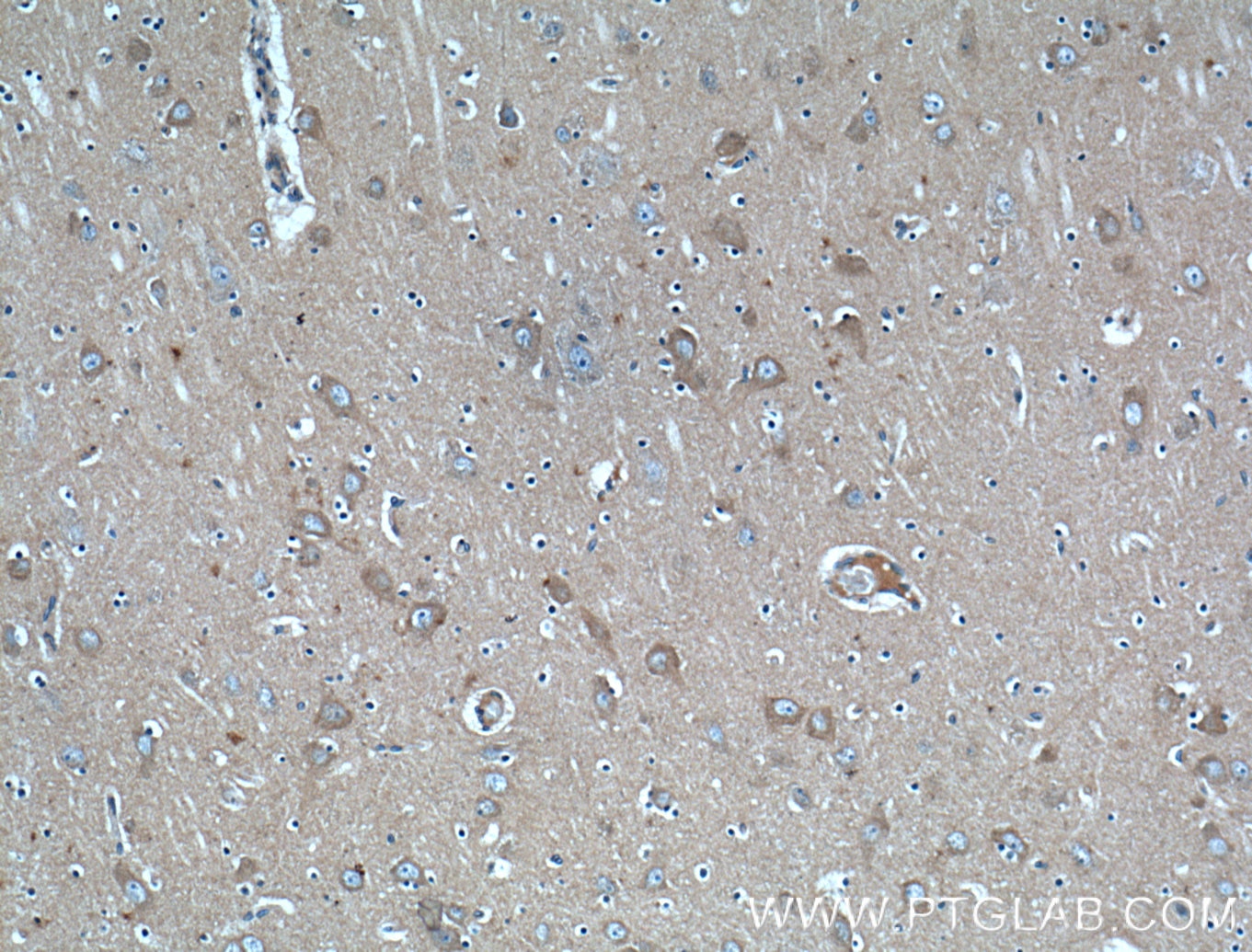Anticorps Polyclonal de lapin anti-PACSIN1
PACSIN1 Polyclonal Antibody for WB, IF, IHC, ELISA
Hôte / Isotype
Lapin / IgG
Réactivité testée
Humain, rat, souris
Applications
WB, IHC, IF/ICC, ELISA
Conjugaison
Non conjugué
N° de cat : 13219-1-AP
Synonymes
Galerie de données de validation
Applications testées
| Résultats positifs en WB | tissu de cervelet de souris, tissu cérébral de souris |
| Résultats positifs en IHC | tissu cérébral humain il est suggéré de démasquer l'antigène avec un tampon de TE buffer pH 9.0; (*) À défaut, 'le démasquage de l'antigène peut être 'effectué avec un tampon citrate pH 6,0. |
| Résultats positifs en IF/ICC | cellules SH-SY5Y |
Dilution recommandée
| Application | Dilution |
|---|---|
| Western Blot (WB) | WB : 1:500-1:2000 |
| Immunohistochimie (IHC) | IHC : 1:50-1:500 |
| Immunofluorescence (IF)/ICC | IF/ICC : 1:20-1:200 |
| It is recommended that this reagent should be titrated in each testing system to obtain optimal results. | |
| Sample-dependent, check data in validation data gallery | |
Applications publiées
| IHC | See 1 publications below |
Informations sur le produit
13219-1-AP cible PACSIN1 dans les applications de WB, IHC, IF/ICC, ELISA et montre une réactivité avec des échantillons Humain, rat, souris
| Réactivité | Humain, rat, souris |
| Réactivité citée | Humain |
| Hôte / Isotype | Lapin / IgG |
| Clonalité | Polyclonal |
| Type | Anticorps |
| Immunogène | PACSIN1 Protéine recombinante Ag4102 |
| Nom complet | protein kinase C and casein kinase substrate in neurons 1 |
| Masse moléculaire calculée | 444 aa, 51 kDa |
| Poids moléculaire observé | 48-51 kDa |
| Numéro d’acquisition GenBank | BC040228 |
| Symbole du gène | PACSIN1 |
| Identification du gène (NCBI) | 29993 |
| Conjugaison | Non conjugué |
| Forme | Liquide |
| Méthode de purification | Purification par affinité contre l'antigène |
| Tampon de stockage | PBS avec azoture de sodium à 0,02 % et glycérol à 50 % pH 7,3 |
| Conditions de stockage | Stocker à -20°C. Stable pendant un an après l'expédition. L'aliquotage n'est pas nécessaire pour le stockage à -20oC Les 20ul contiennent 0,1% de BSA. |
Informations générales
PACSIN1 (also known as syndapin-1) is a member of the protein kinase C and casein kinase substrate in neurons (PACSIN) family. In mammals, the PACSIN family is comprised of three members, PACSIN1, PACSIN2, and PACSIN3 (PMID: 34990060). PACSIN1 is expressed mainly in neurons, whereas PACSIN2 is ubiquitously expressed in all tissues, and PACSIN3 is expressed mainly in skeletal muscle and the heart (PMID: 23668323). All of these three members contain an N-terminal F-BAR domain and a C-terminal SH3 domain. PACSIN1 plays a role in endocytosis and endosomal recycling. Meanwhile, it has a role in actin remodeling and microtubule nucleation and also plays a particular role in membrane shaping and reconstruction (PMID: 23035120; 34422904). PACSIN1 is involved in neuromorphogenesis and the regulation of the nervous system, and the inappropriate expression of PACSIN1 has been associated with some neurological diseases, including schizophrenia, Alzheimer's disease, and Huntington's disease (PMID: 34990060).
Protocole
| Product Specific Protocols | |
|---|---|
| WB protocol for PACSIN1 antibody 13219-1-AP | Download protocol |
| IHC protocol for PACSIN1 antibody 13219-1-AP | Download protocol |
| IF protocol for PACSIN1 antibody 13219-1-AP | Download protocol |
| Standard Protocols | |
|---|---|
| Click here to view our Standard Protocols |
Publications
| Species | Application | Title |
|---|---|---|
Front Mol Biosci Decreased Expression of PACSIN1 in Brain Glioma Samples Predicts Poor Prognosis. |









